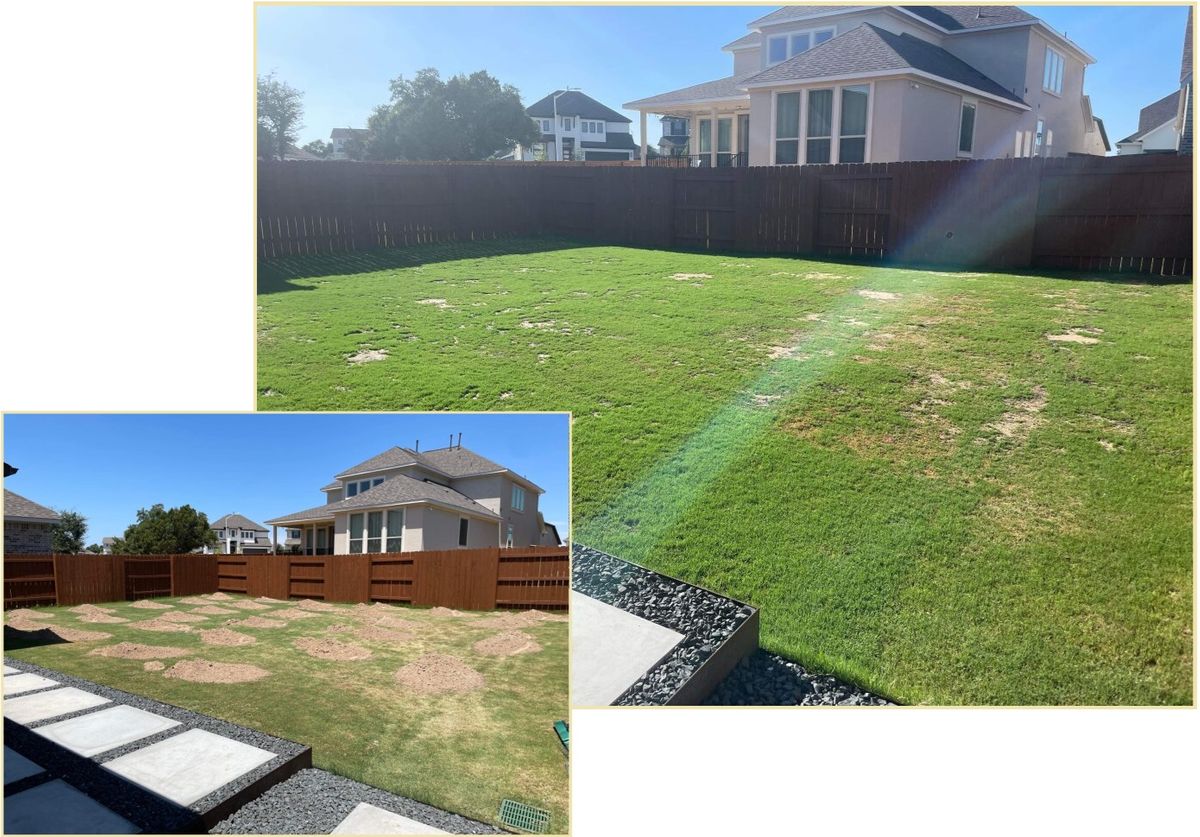The two crucial practices that often get confused are lawn leveling and lawn grading. While both aim to enhance or solve the health of your lawn, they serve distinct purposes. Let's dive into the disparities between these two techniques.
Lawn Leveling:
Lawn leveling primarily focuses on achieving a smooth and even surface across your lawn. It involves addressing minor irregularities, bumps, and depressions that can detract from the aesthetics of your yard and impede proper water drainage. Common tools used for lawn leveling include leveling rakes, drag mats, and topdressing materials like sand or soil mix.
The process of lawn leveling typically begins by identifying uneven areas and systematically distributing leveling materials to create a uniform surface. This practice not only enhances the visual appeal of your lawn but also promotes healthier grass growth by ensuring consistent moisture distribution and reducing the risk of pooling water.
Lawn Grading:
In contrast, lawn grading involves more extensive alterations to the terrain of your yard. It focuses on reshaping the contours of the land to improve drainage, prevent erosion, and optimize water runoff. Lawn grading is often necessary when dealing with severe slopes, drainage issues, or preparing the ground for landscaping projects.
Grading may entail significant earthmoving activities, such as adding or removing soil to achieve the desired slope and contour. This process requires careful planning and expertise to ensure proper water flow away from structures and towards designated drainage areas. Additionally, lawn grading may involve the installation of drainage systems, retaining walls, or terraces to manage water runoff effectively.
Key Differences:
Scope: Lawn leveling addresses minor surface imperfections to create a smoother appearance, while lawn grading involves reshaping the terrain to improve drainage and prevent erosion.
Purpose: Lawn leveling aims to enhance aesthetics and promote even grass growth, whereas lawn grading focuses on managing water runoff and preventing water-related issues.
Intensity: Lawn leveling typically involves lightweight equipment and materials, whereas lawn grading may require heavy machinery and significant earthmoving.
Necessity: Lawn leveling is often done for cosmetic reasons or to address minor drainage issues, while lawn grading is essential for correcting severe drainage problems or preparing the ground for landscaping projects.
In summary, while both lawn leveling and lawn grading contribute to the overall health and appearance of your lawn, they serve distinct purposes and require different approaches. Understanding these differences can help you determine the most appropriate course of action to achieve the lawn of your dreams. Contact us today!

